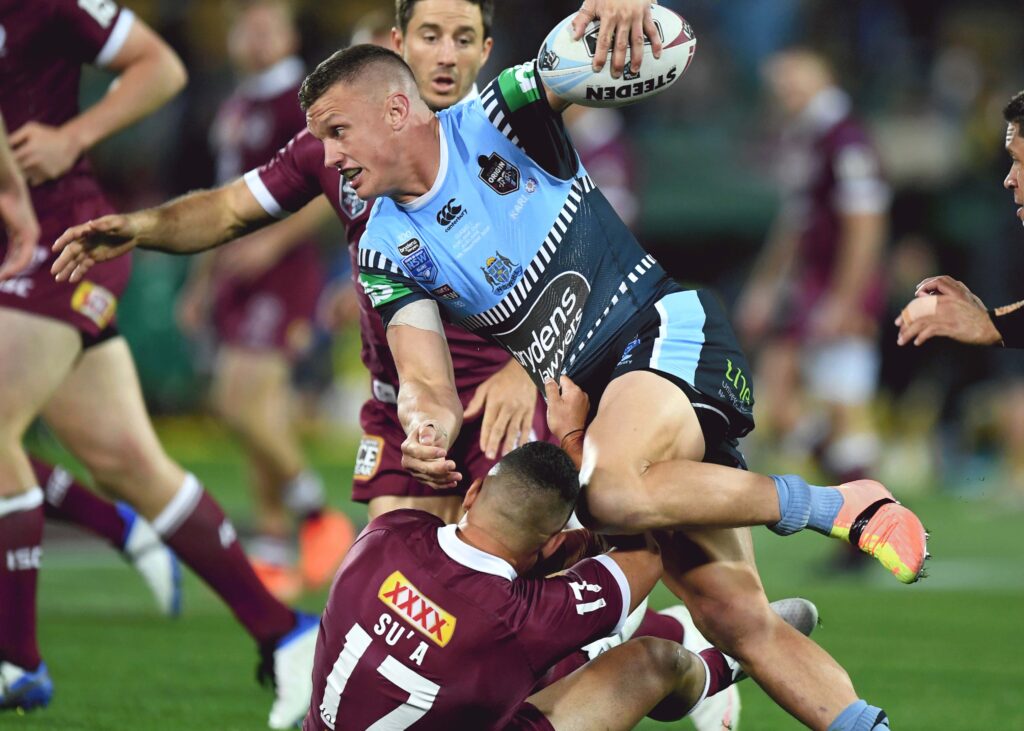Don’t get your League muddled with your Union. We explore the differences between the two rugby codes in the lead up to the Rugby League State of Origin Adelaide series.
Australian Rules, motorsports, horse racing, cricket or soccer; there is no doubt South Aussies love their sport.
But when it comes to the popularity of rugby, compared to our eastern state cousins, we’re a little behind. At least, that’s what we thought.
On Wednesday, 31 May, the Queensland Maroons will take on the NSW Blues for the second coming of the Ampol State of Origin Series. It will be the State of Origin’s second time in Adelaide but the first in front of an unrestricted, post-COVID crowd.
In 2020, Adelaide hosted its first State of Origin match in front of a COVID-restricted attendance of 25,000.
With only select seats remaining for this month’s clash, it’s a testament to the state’s dedication to sporting events – no matter the code.
WATCH THIS: Don’t know which side to pick? We let dogs around Adelaide choose for us.
For those who don’t know, the State of Origin is part of the National Rugby League (NRL), not Union.
Don’t know what the difference between the two codes is? We break down some of the key distinctions.
History is important
Rugby wasn’t always split into two codes, but sometime in the late 1800s there was a row over money in the UK, and some clubs broke away from the original Rugby Football Union to create a new league.
Some rules were adapted, styles changed, and eventually, League and Union became codes of their own.
How many players per side?
Rugby Union has 15 players on the field at any given time and up to eight replacement players on the bench.
Meanwhile, Rugby League only has 13 players on the field and 4 on the bench, but can make up to 10 substitutions throughout a game.
How long can you hold the ball?
Rugby Union does not restrict tackles. The offensive team (the team with the ball) can keep going until they lose possession or the opposition steals the ball.
In Rugby League, a team is only allowed six tackles before possession changes over to the other team.

What happens when a player is tackled?
When a player is tackled in Rugby Union and pulled to the ground, they must release the ball. Teammates form a physical barrier around the ball to keep the opposition back so the offensive team can pick up and run forward with the ball. The other team can steal the ball during this play. This is called a ruck.
In Rugby League, a tackle is considered the end of a play. The play is restarted by a player rolling the ball through their legs to a teammate behind them. Unlike in Union, the opposition cannot steal the ball.
Set pieces: scrums and lineouts
Set pieces are an important part of Rugby Union. Scrums involve eight players from each team binding together to push against each other and compete for the ball. This is used to restart the game after minor rule infringements. Lineouts occur when the ball goes out of bounds and the teams contest to catch a ball thrown back into play.
Rugby League has six players per team in the scrums, but in the modern game, it’s not overly competitive.
Keeping score
There are minor differences in the scoring of the codes.
Rugby Union
- Try: five points
- Conversion: two points
- Drop goal: three points
- Penalty goal: three points
Rugby League
- Try: four points
- Conversion: two points
- Drop goal: one point
- Penalty goal: two points
Key points about the State of Origin
- The State of Origin match on 31 May 2023 is expected to bring an estimated $15 million into the state’s economy, attracting fans from all over the country.
- This will be the first time Rugby League’s biggest rivalry will play in front of a full capacity crowd.
- The Living End will perform at Adelaide Oval during the State of Origin.
- Hosting the State of Origin is a key initiative to highlight the state’s dedication to elite sporting events, following the success of AFL Gather Round and LIV Golf Adelaide.
Don’t miss out. Click here to book your tickets to the 2023 State of Origin.
Want more for your calendar? Check out these other events in South Australia during June.

















